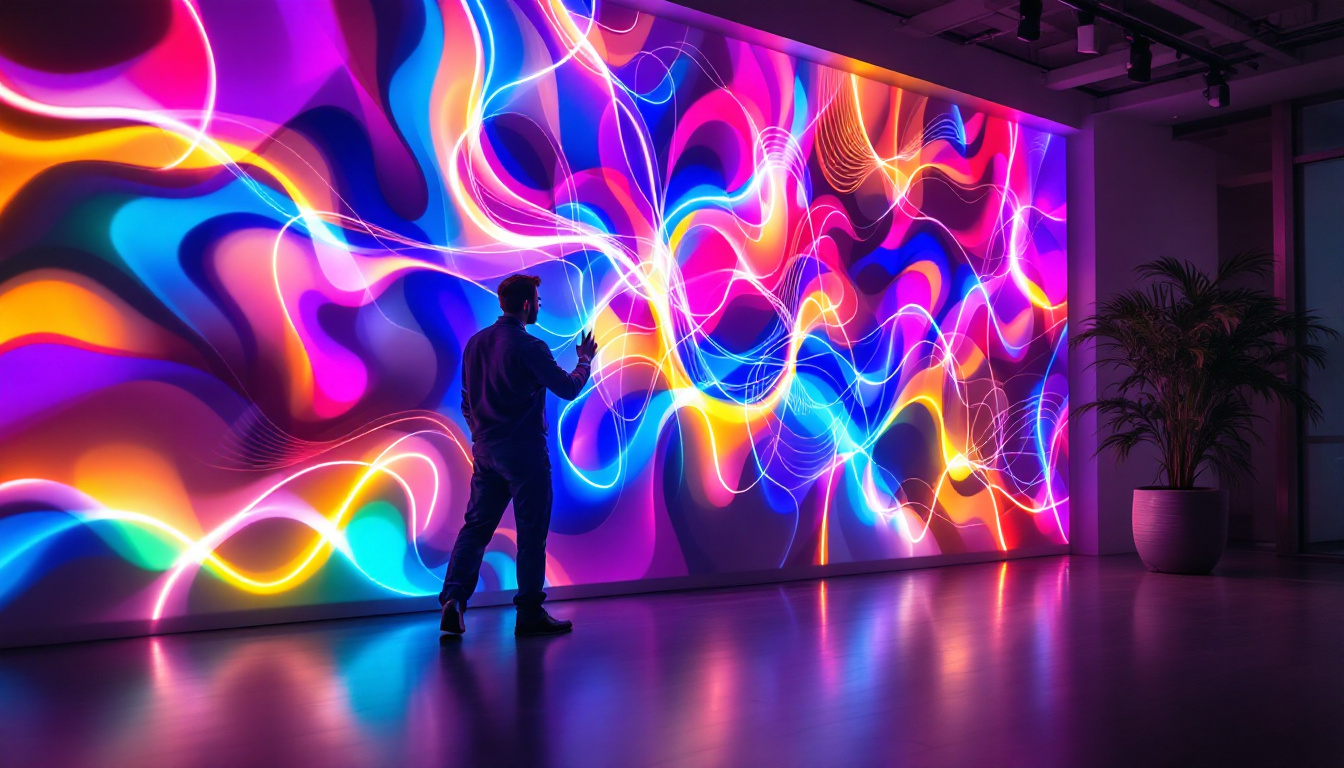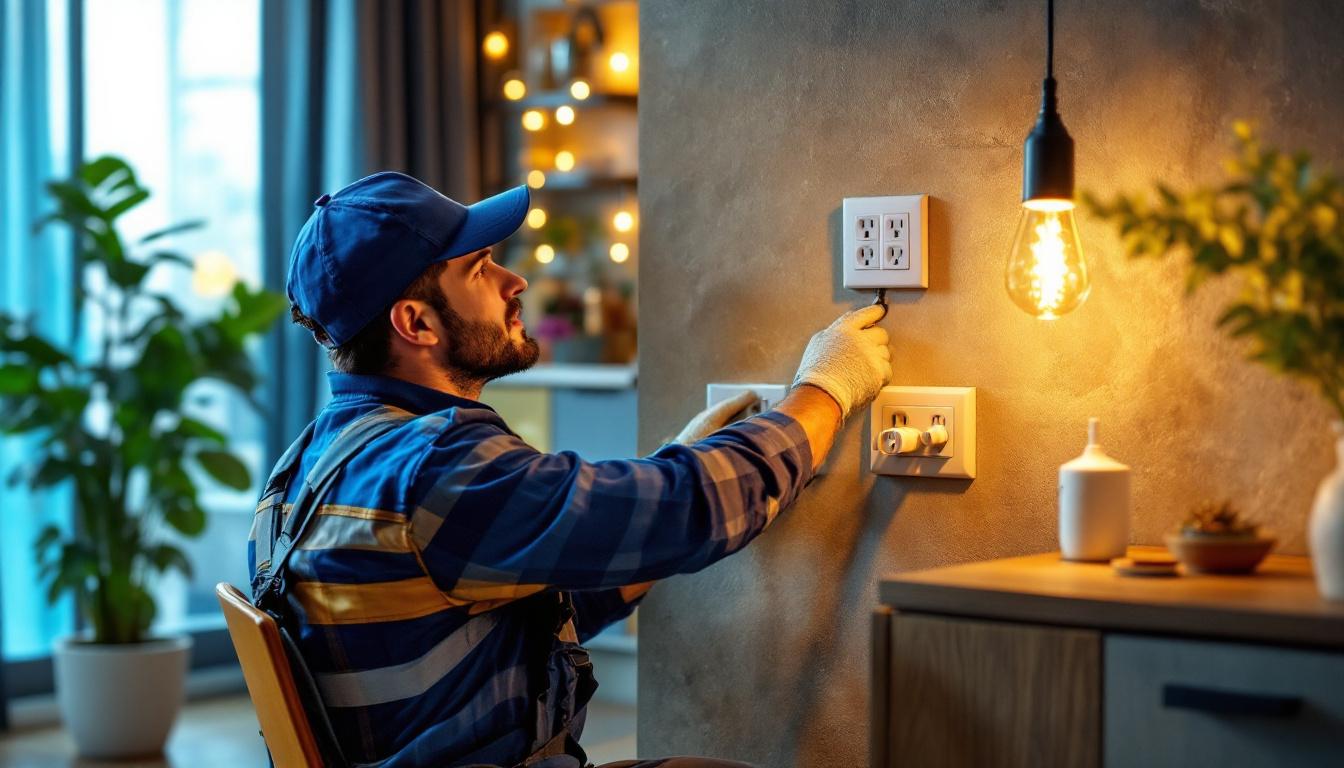
In recent years, LED lighting has transformed the way we think about illumination, not just in terms of functionality but also as a medium for artistic expression. For lighting contractors, understanding the nuances of LED lighting wall art can open up new avenues for creativity and client satisfaction. This guide aims to provide comprehensive insights into the world of LED wall art, covering everything from design principles to installation techniques.
LED wall art combines technology and creativity, allowing for dynamic displays that can enhance any space. Unlike traditional art, which is static, LED wall art can change colors, patterns, and even images, providing an interactive experience. This flexibility makes it an appealing option for residential and commercial projects alike.
At its core, LED wall art refers to any artwork that incorporates LED lighting as a primary element. This can range from simple backlit panels to complex installations featuring programmable lighting effects. The integration of LEDs allows artists and designers to create pieces that are not only visually striking but also energy-efficient. The technology behind LED wall art has evolved significantly, enabling creators to push the boundaries of traditional art forms. For instance, some installations now utilize smart technology, allowing users to control the artwork via mobile apps, adding another layer of interactivity and engagement.
One of the most significant advantages of LED wall art is its versatility. It can be used in various settings, including homes, offices, restaurants, and galleries. Additionally, LED technology is known for its longevity and low energy consumption, making it an environmentally friendly choice. Furthermore, the ability to customize colors and patterns allows for personalization, catering to the unique tastes of clients. Beyond aesthetics, LED wall art can also serve functional purposes, such as providing ambient lighting or enhancing the mood of a space. In commercial settings, businesses can utilize LED wall art to create an inviting atmosphere that attracts customers, while in homes, it can transform a dull room into a vibrant and lively environment. The interplay of light and art can evoke emotions and create memorable experiences, making LED wall art a compelling choice for any space.
When considering LED wall art for a project, several design factors must be taken into account. These include the intended ambiance, the size of the space, and the preferences of the client. A well-thought-out design can elevate a space and create a memorable experience for those who inhabit it. The integration of LED technology not only enhances the visual appeal but also allows for dynamic changes in color and brightness, which can transform the atmosphere of a room throughout the day or during special events.
The selection of the artwork itself is crucial. It should align with the overall theme of the space while also resonating with the client’s personal style. Whether it’s a bold abstract piece or a serene landscape, the artwork should evoke the desired emotions and complement the existing decor. Additionally, considering the narrative or message behind the artwork can add depth to the installation, inviting viewers to engage with it on a more profound level. Collaborating with local artists or exploring unique pieces from different cultures can also infuse a sense of originality and personality into the design.
Color plays a vital role in LED wall art. Different colors can elicit various emotional responses, and understanding color theory can significantly enhance the effectiveness of the installation. Additionally, the dynamics of light—how it interacts with the surrounding environment—should be considered. For instance, the placement of the art can affect how light is perceived and can either enhance or detract from the overall aesthetic. Utilizing programmable LED technology allows for the manipulation of colors and brightness, enabling the artwork to adapt to different moods or times of day. This flexibility can create an immersive experience, transforming a simple wall into a living canvas that evolves with the viewer’s emotions.
The scale of the artwork in relation to the space is another critical factor. A large piece can serve as a focal point, while smaller installations can create a sense of intimacy. Proportion must also be considered; the artwork should harmonize with the dimensions of the wall and the surrounding elements to create a cohesive look. Furthermore, the height at which the artwork is displayed can influence how it is perceived. For instance, mounting art at eye level can foster a more personal connection, while higher placements may draw the eye upward, enhancing the sense of space in a room. Incorporating elements such as frames or borders can also help define the artwork’s scale, making it stand out or blend seamlessly with the environment, depending on the desired effect.
Proper installation is essential for the effectiveness of LED wall art. It not only ensures safety but also enhances the visual impact of the piece. Lighting contractors must be familiar with various installation techniques to achieve the best results.
There are several mounting options available for LED wall art, including flush mounting, standoff mounting, and hanging methods. Flush mounting creates a sleek look that integrates the art into the wall, while standoff mounting adds depth and dimension. Hanging methods can provide flexibility in positioning and can be particularly useful for larger pieces.
LED wall art requires a reliable power source. Contractors should ensure that the wiring is concealed for aesthetic purposes while also adhering to safety standards. It’s essential to assess the power requirements of the LEDs and select an appropriate power supply to avoid any electrical issues.
For dynamic LED wall art, programming and control systems are vital. These systems allow for the customization of lighting effects, including color changes and patterns. Familiarity with various control options, such as remote controls, smartphone apps, or integrated smart home systems, can enhance the user experience and provide added value to clients.
Like any art form, LED wall art requires maintenance to ensure its longevity and effectiveness. Lighting contractors should inform clients about proper care techniques to keep the artwork looking its best.
Cleaning LED wall art involves gentle techniques to avoid damaging the components. A soft, dry cloth can be used to wipe down surfaces, while specialized cleaners may be necessary for more intricate designs. It’s important to avoid harsh chemicals that could harm the LEDs or the artwork’s finish.
Regular inspections can help identify any potential issues before they become significant problems. Contractors should recommend periodic checks to ensure that the LEDs are functioning correctly and that the wiring remains secure. This proactive approach can save clients from costly repairs in the long run.
The world of LED wall art is constantly evolving, with new trends emerging that reflect changes in technology and design preferences. Staying informed about these trends can provide contractors with fresh ideas and inspiration for their projects.
One of the most exciting trends in LED wall art is the rise of interactive installations. These pieces engage viewers by allowing them to influence the lighting effects through touch or motion sensors. This interactivity creates a memorable experience and can be particularly appealing for commercial spaces looking to attract customers.
Nature-inspired designs are gaining popularity, with many artists incorporating organic shapes and colors into their LED wall art. These pieces often evoke a sense of tranquility and connection to the natural world, making them a great choice for spaces focused on wellness and relaxation.
Minimalism continues to be a dominant trend in design, and LED wall art is no exception. Simple, clean lines and understated designs can create a sophisticated look that appeals to modern sensibilities. This trend often emphasizes the beauty of the light itself, allowing the LEDs to take center stage.
Examining real-world applications of LED wall art can provide valuable insights for lighting contractors. Understanding how others have successfully integrated these installations can inspire new ideas and approaches.
In commercial settings, LED wall art can serve as a powerful branding tool. For example, a restaurant may use a large, illuminated logo as a focal point in its dining area, creating a memorable impression on patrons. Additionally, dynamic wall art can enhance the atmosphere, making the space more inviting and engaging.
In residential projects, LED wall art can be tailored to reflect the homeowner’s personality and style. From custom designs featuring family photos to abstract pieces that complement the decor, the possibilities are endless. These installations can transform a dull wall into a vibrant focal point, enhancing the overall aesthetic of the home.
Public installations of LED wall art can create a sense of community and engagement. Parks, plazas, and cultural centers often feature large-scale LED displays that attract visitors and encourage interaction. These installations can serve as landmarks, drawing people in and fostering a sense of connection to the space.
LED lighting wall art represents a unique fusion of technology and creativity, offering lighting contractors an exciting opportunity to expand their services and enhance their projects. By understanding the design principles, installation techniques, and maintenance requirements, contractors can effectively incorporate LED wall art into their offerings. As trends continue to evolve, staying informed and adaptable will ensure success in this dynamic field.
Whether working on residential, commercial, or public projects, the potential of LED wall art is vast. By embracing this innovative medium, lighting contractors can not only meet the needs of their clients but also contribute to the growing appreciation of art and design in everyday spaces.
Ready to elevate your lighting projects with the innovative LED wall art? At LumenWholesale, we provide lighting contractors like you with the highest quality, spec-grade lighting products at prices that can’t be beaten. Say goodbye to local distributor markups and hello to a vast selection of reliable, high-performance lighting that meets the most stringent industry standards. With free shipping on bulk orders, you can stock up on premium lighting solutions without worrying about hidden fees or compromises. Make your next project shine by choosing Wholesale Lighting at the Best Value with LumenWholesale.

Discover expert tips and innovative strategies for lighting contractors to elevate outdoor spaces with pedestal lights.

Discover how lighting contractors are transforming spaces with diverse electrical outlets.

Discover essential insights into light switches that every lighting contractor should know.

Discover how LED motion sensor lights are revolutionizing outdoor lighting for contractors.